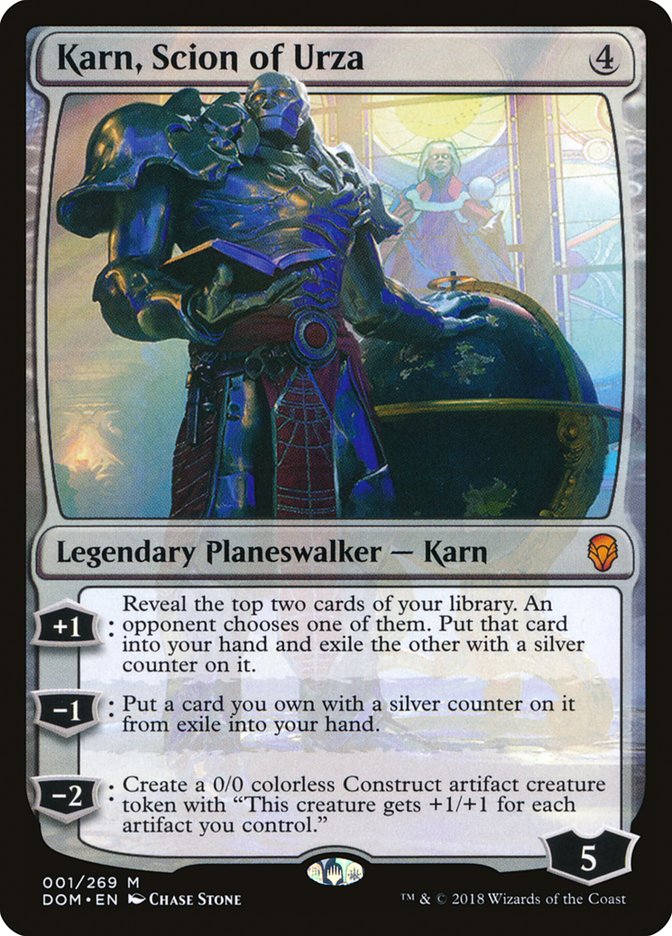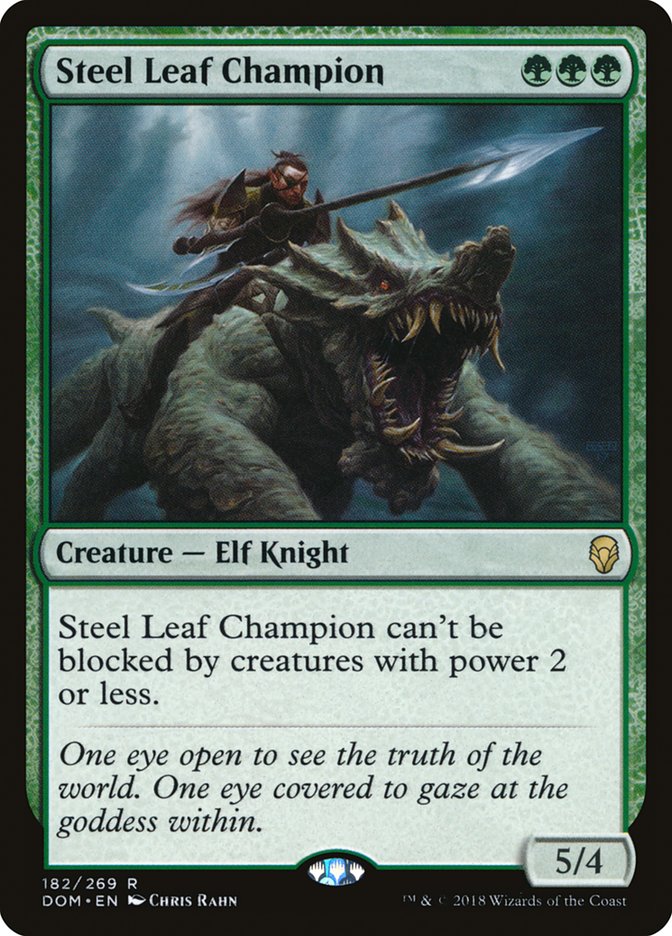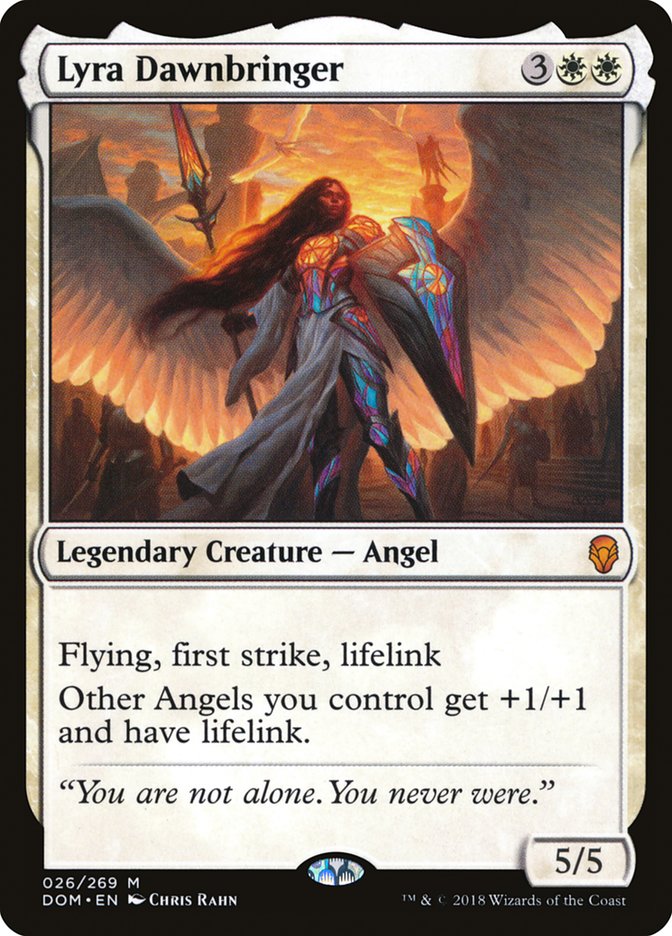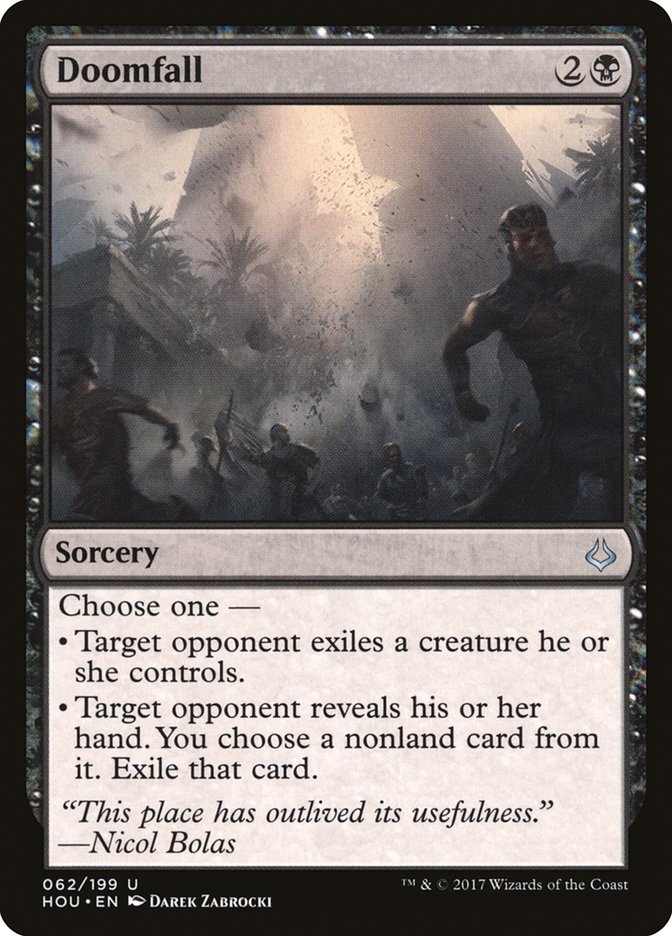I never got to write a tournament report or primer for my Top 4 finish at Grand Prix Seattle with R/B Aggro. That tournament marked the third time I had played Hazoret the Fervent in a tournament and the first time posting a respectable finish. If I had respected Mono-Red Aggro and U/R God-Pharaoh’s Gift just a teensy bit more, I probably would have won the tournament.
Anyway, Dominaria is out on Magic Online and I’ve spent my fair share of time in the Standard Leagues. I’m definitely liking what I’m seeing from Standard so far, even if I did circle back to R/B Aggro.
The Decklist and Rationale
Creatures (23)
- 3 Pia Nalaar
- 4 Bomat Courier
- 4 Scrapheap Scrounger
- 4 Inventor's Apprentice
- 4 Walking Ballista
- 1 Hazoret the Fervent
- 3 Rekindling Phoenix
Planeswalkers (3)
Lands (15)
Spells (19)

The reason I played R/B Aggro at Grand Prix Seattle was that I wanted an aggressive deck that wasn’t super-weak against Walking Ballista and that could transform into a control deck against big creatures. Inventor’s Apprentice and a Rakdos shell afforded me everything I wanted and more. Chandra, Torch of Defiance was very strong against the expected metagame as well.
I liked my spot against Sultai Constrictor, U/B Midrange, and U/W God-Pharaoh’s Gift while also having a reasonable shot against Mono-Red and U/R Gift. The deck performed well for me (and many others) at the Grand Prix, and while the metagame has changed since then, the formula looks like it will continue to succeed. Still, a lot of things are different and we have to adapt.
Cards like Bomat Courier have gotten weaker since Llanowar Elves, Seal Away, Fungal Infection, and Goblin Chainwhirler have entered the format. It’s been a while since I’ve sacrificed Bomat Courier other than in desperation. Still, Bomat Courier is integral to the success of R/B. Not only is it an artifact for Inventor’s Apprentice, but it’s also the type of card that makes people sideboard in removal for smaller creatures, even though you sideboard them out frequently. While Bomat Courier rarely refreshes your hand anymore, it’s still a potent threat that must be dealt with.
Why not play Goblin Chainwhirler ourselves? You can have a bunch of black spells or Goblin Chainwhirler, but not both without making some sacrifices. Trying to play Goblin Chainwhirler is ambitious, but without it, your matchups against tokens and other aggressive decks suffer. You can add a Canyon Slough and some Aether Hubs instead of the Swamps and sideboard Goblin Chainwhirler over Sweltering Suns, which has mostly worked for me, but the upside is probably not worth the risk.
The good news is that without Goblin Chainwhirler, you get to play Arguel’s Blood Fast and have better mana overall. Without Arguel’s Blood Fast, your control matchups tend to suffer. However, I could see doing some cute things if necessary, such as playing Lifecrafter’s Bestiary and some sort of Naturalize effect off just Spire of Industry and Aether Hub. Lifecrafter’s Bestiary could play a similar role to Arguel’s Blood Fast against control decks while the Disenchants (probably just plain ole Naturalize, although I could see Forsake the Worldly) would free your Chandras and Hazorets from their Cast Outs.
I tried Karn, Scion of Urza and liked it quite a bit. However, I was playing it over Hazoret and Rekindling Phoenix and I greatly missed having them in the deck. If your only four-drops are planeswalkers, you end up in situations where your expensive cards aren’t great when you’re behind. Alternatively, Hazoret and Rekindling Phoenix do a better job of helping you play catch-up most of the time.
Karn versus Chandra is a reasonable debate, but I think Chandra comes out on top, at least with the way the deck is currently configured. If you wanted to add more artifacts like Heart of Kiran and Scrap Trawler, Karn could potentially overshadow Chandra, so that’s something to think about.
There were some games where Karn plus removal completely knocked out opponents, but it makes me want to try Karn in a white or black deck that doesn’t already have a ton of competition at the four-drop slot. Vraska’s Contempt and Cast Out both count, but between Cast Down and Seal Away, you don’t necessarily need all four copies of your four-mana removal anymore.
Why R/B Over Mono-Red?
My experience with Mono-Red Aggro post-Dominaria has not been great. You’d think that the unquestionably best home for Goblin Chainwhirler would be one of the best decks in the format, but it doesn’t seem that way. White and green both received a host of excellent tools in this set, and they are bad news for Mono-Red.
Llanowar Elves (and Mono-Red) make me want to include some copies of Magma Spray in the maindeck, just because staring down a Steel Leaf Champion on Turn 2 isn’t very fun. The issue with that is the prevalence of white decks at the moment, where Magma Spray is unlikely to tag anything noteworthy.
Cast Down is an option, but I like Abrade more against the legendary Vehicles in the format and God-Pharaoh’s Gift. If the format becomes all about Steel Leaf Champion, you should adapt, but we aren’t there yet. Unfortunately, there’s not much you can do against Lyra Dawnbringer aside from Unlicensed Disintegration, so maybe the fourth copy is worthy of inclusion. It was a little too clunky before, especially against Mono-Red Aggro. Now, with various white token decks in the format, it might have the same issue, but even those token decks could be packing Lyra maindeck.
Shrug.
The Transformational Sideboard
Some of the most successful decks in Magic’s history have had transformational sideboard plans. You can potentially sideboard too many cards and dilute your gameplan, but a transformational sideboard plan effectively changes your gameplan entirely. Having to do that is typically a sign of weakness and that the matchup is so hopeless that you shouldn’t even bother trying.
However, if your maindeck is configured as a bridge to your sideboard plan, a transformational sideboard plan can work. In this case, R/B has several powerful four-drops maindeck and the perfect bridge card in Walking Ballista. Were you building an R/B deck that was aggressive in the first game and planned to stay that way in post-sideboard games, you’d likely see things like Heart of Kiran or Dhund Operative maindeck. Since those cards don’t bridge well into your more controlling plan, they don’t make the cut.
Decks with Winding Constrictor and Walking Ballista are very good at invalidating your early creatures like Inventor’s Apprentice and Bomat Courier. It’s not ideal to keep those in your deck, so instead we can look for ways to sideboard them out and strengthen our deck against theirs as much as possible. This sort of plan involves having removal and card advantage, making you seem like an entirely different deck.
Another key to building a transformational sideboard is to strive toward having cards that fit your plan, yet are reasonable in other matchups as well. A card like Doomfall isn’t the ideal piece of disruption against control, but it’s passable while also serving as one of the few ways in the format to remove a Bristling Hydra.
With control decks now packing Lyra Dawnbringer, Doomfall starts looking better and better.
Because you will sideboard from an aggressive deck into a midrange deck in some spots, your mana curve will be significantly altered, which means your deck will want to be a 25-land deck instead of a 24-land deck. Sideboarding a land might not feel right or seem like a good use of a sideboard slot, but you need to look at it less individually and more like a piece of a greater whole.
One of the biggest upsides from having a transformational sideboard plan is that your opponents will both play and sideboard worse against you. That isn’t reason enough to have a transformational sideboard plan, but it can be a huge bonus.
The Sideboard Guide
These plans aren’t perfect. If you want to change some of the specifics around, by all means do so. However, I am confident in the cards I am taking out in certain matchups and in the stances I’m taking to fight those matchups. If, for example, you don’t like Sweltering Suns and want to play Goblin Chainwhirler instead, you can do that. If you want to drastically alter the maindeck or sideboard, some of these plans may no longer be optimal.
Either way, this sideboard guide should give you a baseline to go by should you make any changes.
Mono-Red Aggro
Out:
In:
If their plan is to stay aggressive, this is how I would sideboard. Others have suggested bringing in Doomfall here as an answer to their bigger threats, but I found I was losing to their three-drops more than their four-drops, both before and after Grand Prix Seattle. Since you have Magma Spray and Sweltering Suns, it’s possible that some amount of Doomfalls is correct, especially since there are Scrapheap Scroungers and some Chandras left in your deck that you don’t necessarily want.
If they go bigger, with Goblin Chainwhirlers and Rekindling Phoenixes, you need to sideboard much differently:
Out:
In:
Realistically, they should try to get under you, since that’s their best chance of winning the matchup. However, they might have a plan to go bigger against the mirror match and treat you as the same, even though you’re not.
U/W Approach
Out:
In:
Lyra Dawnbringer can be a huge issue if you let it. They will think it’s their trump card, as it is against many other red decks, but not this one. Cards like Authority of the Consuls will be pretty bad against you, especially if you resolve an Arguel’s Blood Fast. You’re not as much of a favorite in this matchup as Mono-Red is, but then again, U/W got a host of new tools to fight aggressive decks, so maybe the matchups are closer than I think.
G/X Midrange
Out:
In:
Against these decks, you basically become a control deck. Kill their stuff, draw some cards, and eventually they’ll fold. Don’t be surprised if, while all this is going on, they have some useless Fatal Pushes or Cartouche of Ambitions rotting in their hand.
Bomat Courier is fine against green decks without Walking Ballista because you can clear the way with your plethora of removal. Against Sultai Constrictor, you can bring in Sweltering Suns for Bomat Couriers as well.
Out:
In:
The plan is to disrupt them, make sure to not lose to their backup beatdown plan, and clock them with fliers.
Sorcerous Spyglass is basically in my sideboard just for this matchup because it allows me to tap out for Rekindling Phoenix while still disrupting them. It could also be something like Sentinel Totem, but Sorcerous Spyglass gives you some information and locks out all their copies of Gate to the Afterlife, whereas Sentinel Totem one-shots their graveyard and they can rebuild. Both have potential weaknesses to opposing Abrades.
You could also play something like Release the Gremlins, which would have more crossover hate, but Sorcerous Spyglass is just as good against something like Heart of Kiran while also potentially nailing some other weird permanents.
White Tokens
Out:
In:
If they have Toolcraft Exemplar and Scrapheap Scrounger, Magma Spray becomes a valuable tool. Be wary of Lyra Dawnbringer as a sideboard option of theirs.
Some Closing Notes on Dominaria Standard
Lyra Dawnbringer and Teferi, Hero of Dominaria have proven themselves to be real players in Standard. Karn, Scion of Urza, while showing up in some winning decks, has yet to find the perfect home. History of Benalia and white in general seem to be everywhere.
If you’re prepared for the white onslaught that’s coming, you’ll probably do quite well.







